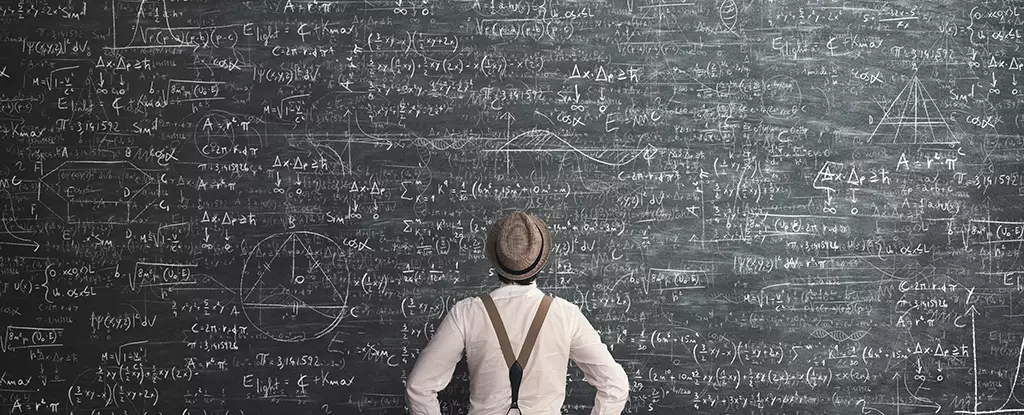After an extensive search spanning three decades, mathematicians have successfully uncovered a new instance of a unique integer known as a Dedekind number. This remarkable finding, referred to as D(9), is only the ninth known Dedekind number and can be calculated as 286 386 577 668 298 411 128 469 151 667 598 498 812 366 – an impressive 42-digit monster. The discovery of D(9), made possible with the assistance of a supercomputer, follows the unearthing of D(8), a 23-digit Dedekind number, in 1991. The concept of Dedekind numbers may be challenging for non-mathematicians to grasp, let alone compute. Moreover, the complexity involved in these calculations, which deal with enormous numbers, raised doubts regarding the possibility of ever discovering D(9). Nevertheless, the determination and perseverance of the researchers paid off, culminating in this momentous breakthrough in the world of mathematics.
At the heart of Dedekind numbers lie Boolean functions, a form of logic that determines an output from inputs comprising just two states, such as true and false, or 0 and 1. Monotone Boolean functions, specifically, impose restrictions on the logic, ensuring that changing a 0 to a 1 in an input only alters the output from 0 to 1 and never from 1 to 0. The researchers elucidate this concept by employing the representation of red and white colors instead of 0s and 1s, although the underlying principle remains the same. Visualizing monotone Boolean functions as n-dimensional cubes, researchers play a game of balance in which the cube rests on one corner, and the remaining corners are colored either red or white. The sole rule of this game stipulates that a red corner must not be positioned below a white one, creating a vertical red-white intersection. The objective entails counting the number of different cuts present in this game.
The initial Dedekind numbers are relatively straightforward, with D(1) being equivalent to 2, followed by 3, 6, 20, 168, and so forth. However, the calculation of D(8) in 1991 required a Cray-2 supercomputer, one of the most powerful machines at the time, and the expertise of mathematician Doug Wiedemann. This endeavor demanded a staggering 200 hours to accomplish. As for D(9), it proved to be almost twice as lengthy as its predecessor and necessitated the utilization of a specialized supercomputer equipped with Field Programmable Gate Arrays (FPGAs), which can process multiple calculations simultaneously. Consequently, the Noctua 2 supercomputer at the University of Paderborn became the vehicle for pursuing this challenging inquiry. Christian Plessl, the head of the Paderborn Center for Parallel Computing (PC2), where Noctua 2 resides, claims that solving intricate combinatorial problems with FPGAs is a promising avenue, and Noctua 2 represents one of the few supercomputers worldwide capable of undertaking such experiments. Additional optimizations were implemented to furnish Noctua 2 with suitable computations. By employing symmetries within the formula to enhance efficiency, the researchers tasked the supercomputer with solving a massive sum comprising 5.5*10^18 terms (for comparison, the estimated number of grains of sand on Earth amounts to 7.5*10^18). After an arduous five months, Noctua 2 produced the solution to this prodigious computation, ultimately revealing D(9). As of yet, the researchers have not made any indication regarding D(10), leaving us to imagine that its exploration might require another extensive wait of 32 years. The paper disclosing this extraordinary find was presented in September at the International Workshop on Boolean Functions and their Applications (BFA) in Norway.
The elucidation of D(9) stands as a remarkable achievement in the realm of mathematics. The discovery represents not only an acknowledgment of the extraordinary complexity inherent in Dedekind numbers but also a testament to the unwavering dedication and resilience of the researchers involved. This breakthrough may open doors to novel applications of FPGAs in solving intricate combinatorial problems, rendering them a promising tool for future mathematical studies. While the pursuit of D(10) may demand an extended period of time, this groundbreaking revelation inspires hope for future mathematical endeavors, fueling the curiosity and passion of mathematicians worldwide. The disclosure of D(9) amplifies our understanding of Dedekind numbers and pushes the boundaries of human knowledge further, enhancing our appreciation for the remarkable intricacies of mathematics.


Leave a Reply